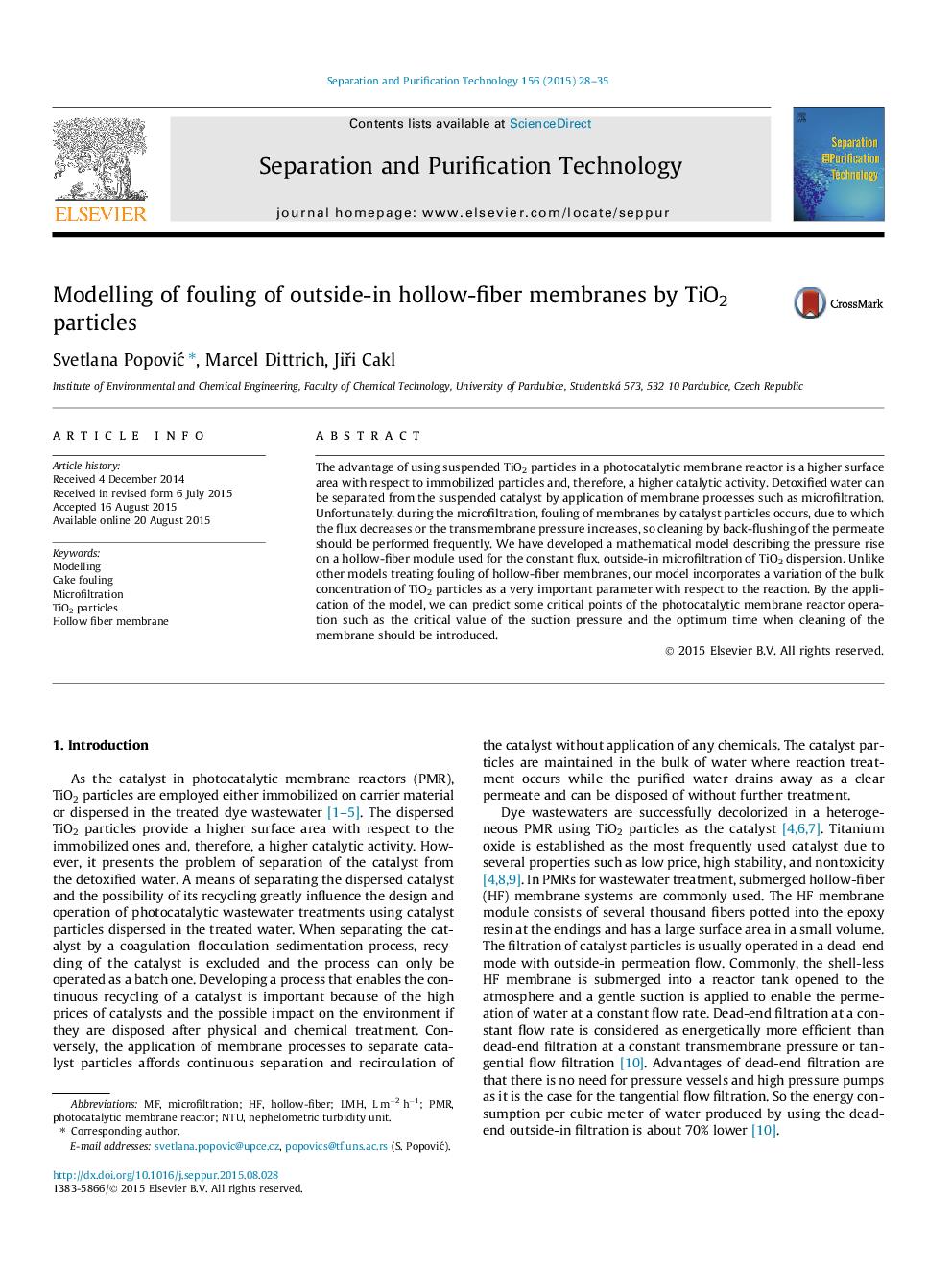| Article ID | Journal | Published Year | Pages | File Type |
|---|---|---|---|---|
| 640338 | Separation and Purification Technology | 2015 | 8 Pages |
•A new model for the prediction of pressure rise during microfiltration of TiO2 particles was proposed.•The model is applicable for the hollow-fiber membrane used in the photocatalytic membrane reactors.•The model takes into account a decrease of the concentration of catalyst in the bulk.•The time when cleaning of the membrane should be introduced can be estimated by using the model.
The advantage of using suspended TiO2 particles in a photocatalytic membrane reactor is a higher surface area with respect to immobilized particles and, therefore, a higher catalytic activity. Detoxified water can be separated from the suspended catalyst by application of membrane processes such as microfiltration. Unfortunately, during the microfiltration, fouling of membranes by catalyst particles occurs, due to which the flux decreases or the transmembrane pressure increases, so cleaning by back-flushing of the permeate should be performed frequently. We have developed a mathematical model describing the pressure rise on a hollow-fiber module used for the constant flux, outside-in microfiltration of TiO2 dispersion. Unlike other models treating fouling of hollow-fiber membranes, our model incorporates a variation of the bulk concentration of TiO2 particles as a very important parameter with respect to the reaction. By the application of the model, we can predict some critical points of the photocatalytic membrane reactor operation such as the critical value of the suction pressure and the optimum time when cleaning of the membrane should be introduced.
